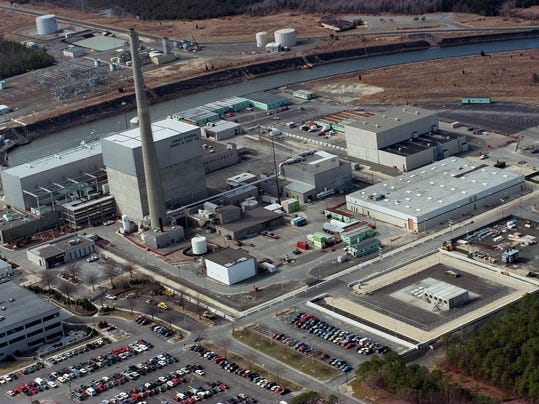Oyster Creek Shut Down
/Oyster Creek shuts down to check safety valves
Kirk Moore, @KirkMooreAPP
11:58 a.m. EDT July 8, 2014 Asbury Park Press www.app.com/

(Photo: File photo )
LACEY – Operators of the Oyster Creek nuclear reactor shut down the power plant to check and possibly replace five safety valves, plant officials said.
The shutdown was prompted by an inspection of previously removed valves, which showed unexpected wear on two of them and could have caused them to fail, according to plant owner Exelon and the U.S. Nuclear Regulatory Commission.
Oyster Creek operators started shutting down the reactor power at about 8 p.m. Monday, and it’s not known how long the plant will remain offline, according to Suzanne D’Ambrosio, a spokeswoman for the plant.
She said the reactor must be shut off for workers to access the five installed electromatic relief valves inside the plant’s drywell, the containment vessel around the nuclear reactor. They are part of the plant’s automatic depressurization system, linked to the emergency core cooling system. In the event of a loss of coolant from a small pipe break — when pressure inside the reactor area remains high — the valves are there to quickly lower the pressure so the emergency system can inject water into the reactor core.
The potential problem began in late June during a maintenance inspection of the valves, NRC officials said. That raised a red flag with nuclear critics, who questioned why a plant shutdown was not required sooner by the NRC.
“The valves are designed so you can do without one, you can possibly do without two,” said Arnie Gundersen, an independent nuclear analyst whose Fairewinds Associates firm often consults for anti-nuclear groups. “That’s the question. When did they know the two valves were inoperable, and when did they decide to shut down?”
The valves are operated by solenoids, powerful electromagnets that slam the valves open when energized. NRC spokesman Neil Sheehan said plant workers “found more than expected wear” on valve springs and supporting parts. Gundersen said the valves are routinely tested in place, but also that kind of wearing can come from the machinery vibration that’s part of the environment inside a nuclear plant.
Sheehan said the agency was on top of the situation as it evolved: “Our resident inspectors assigned to Oyster Creek on a full-time basis have been closely following developments involving the evaluation of the valves and the decision to take the reactor offline to address the issue. They will continue to do so until the problem is satisfactorily resolved.”
According to a formal notice posted by the NRC, the problem with the electomatic relief valves was confirmed Monday and “based on this new information, all 5 of the currently installed EMRVs were conservatively declared inoperable.”
In those instances, a shutdown is required, according to the notice.
Gundersen said he wonders why the shutdown did not happen sooner.
“Were they waiting for parts?” he said. Technically, the indications that valves could have a problem should initiate what’s called a “limiting condition of operation” that needs to be resolved soon under NRC rules, Gundersen said.
“That said, the decision to declare it in operable is less defined,” allowing the NRC to cut operators slack, he added.
The valve issue shows why reactors such as Oyster Creek need filtered vents to control discharges during emergencies, said Janet Tauro of the local group Grandmothers, Mothers and More for Energy Safety, which have pushed for the NRC to impose that proposed rule.
But the economics of building improved vents won’t work for the plant in Lacey, Gundersen said: “Oyster Creek will shut down before they would install them.”
Kirk Moore: 609-709-5036; kmoore@app.com
Follow up story 07.11.14 Latest Shutdown at Oyster Creek Nuclear Reactor Prompts Greater Federal Oversight

